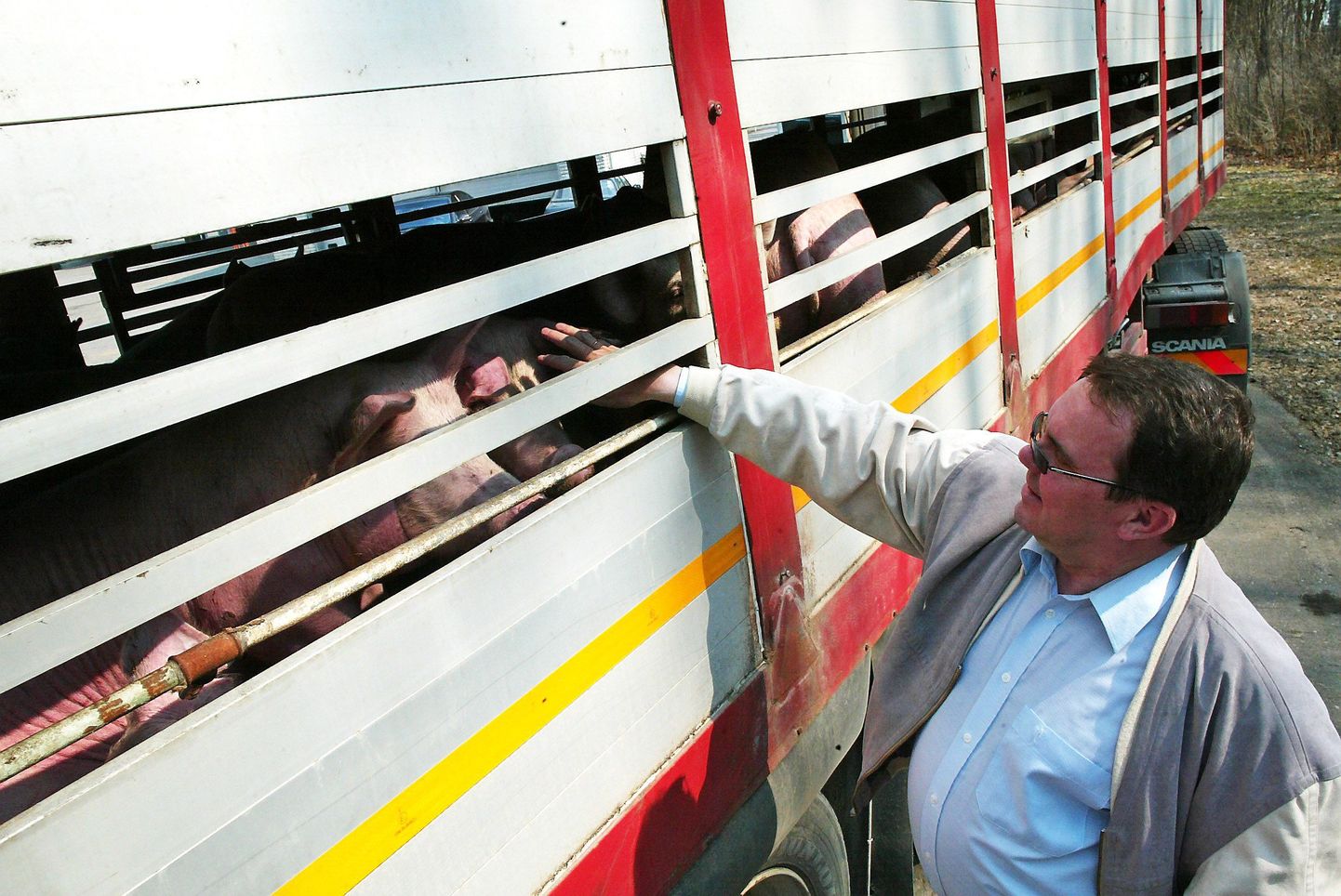
The rapidly spreading swine fever has affected farmers in dire straits. While the state offers support to start anew, many haven't a clue what the new might be.

The rapidly spreading swine fever has affected farmers in dire straits. While the state offers support to start anew, many haven't a clue what the new might be.
Urmas Laht, Estonian Pig Breeding Association head and owner of major West-Virumaa swine farm OÜ Markilo, says he did suggest some years ago that pigs should be taken from small farmers – but was laughed to scorn. Now, the very idea is back – to the backdrop of mega media clamour.
«The situation is absurd,» says Mr Laht, explaining that for the smallest pig farms of up to ten animals the confiscation may not equal loss of livelihood as the hogs are often kept to earn some extra to pension or permanent job. And for some, raising pigs is a social project. Meanwhile, two dozen pigs may already be the means for making a living.
There’s hope, however. As announced by the state, small farms will initially receive a total of €12.7m as support, intended as investments into biosafety measures or rearrangement of economic activity.
Easier on exporters
At the moment, it is easier for those taking pigs abroad. This is the path chosen by Väigo Pihlak, owner of Ruix Manor in Kadrina Parish. But even he is cutting the activity: with 9,000 pigs in his farm at the beginning of the year, the animals are down to 6,100 already split between two sheds. Those that are sold went to Latvia, Lithuania and Poland. But when the borders get closed, Mr Pihlak will face dead end. «Kill and bury,» he suggested...
As underlined by Mr Pihlak: though the farmers have employed fences and disinfecting baths, the fever is still advancing – and will one day perhaps reach his own hogs. He hopes he will be able to rescue one of the two farms with 4,000 pigs in it. Even so, the future is uncertain. «Cereals, I guess... What do you do out of the blue,» admitted Mr Pihlak, adding his fellow pig farmers are cutting operations as well and thinking what’s next.
Already, Ruix Manor pig industry has been forced to lay off staff – of 25, half remain. Should they enter cereals, even fewer will remain on payroll, five or six. «The ladies will have to go,» said the pig farmer.
But for Mr Pihlak, that’s not the end of the story. A few years ago, he invested €1.5m into building a more modern shed, and the works were only finished last year. «Currently, I’m paying to the banks,» said Mr Pihlak.
Arvi Lillepea, owner or Lillepere Farm near Tapa, is raising 20 pigs. «The costs are a shock,» he said regarding the biosafety. All pig farms need to be fenced and equipped with disincentive baths; the feed needs to be either heat-treated or placed off limits for 30 days before feeding to animals or people possibly carrying the infection. And these are just some of the measures.
By all of this, Mr Lillepea is not discouraged, but will nevertheless cut production by lowering the number of pigs. «If the fever persists, I’ll need to totally quit,» he admitted. Up to now, Mr Lillepea has killed pigs for own use and taken them to Oleg Gross the businessman. And he plans to keep it that way. Rakvere Meat Processing Plant no longer accepts pigs from private persons, he said.
But even if pig raising will be history, the Lillepere Farm will still have its beef animals. «Well we’ll have more of these, then,» said the farmer.
Piglets don’t sell
Sven Feldmann who owns Nipi pig farm in Kanepi Parish has raised swine and sold piglets to people for 13 years. To this, the fever will spell end. «I will have to close down,» he confessed. The requirements are just too much. Mr Feldmann thinks the state should have started killing the wild pigs 1.5 to two years ago while the fever was still in Belarus.
He has no employees, as tending the 40 sows has been a job for one. It will take till spring to close the farm down – the sows give birth during Christmas. But where to sell the piglets, he has no idea at the moment.
Thinking about the future, Mr Feldmann turns insecure: «I don’t know what will be.»
He said a consultant called on the phone, saying the state gives money to start doing something else. «Nope, no ideas at the moment,» said Mr Feldmann. Meanwhile, he’ll be waiting for the consultant to call again.
As also admitted by Urmas Laht, there’s no place to put the pork. From the third fever zone, it can only be taken to third zone or slaughterhouse. Even regarding the second zone swine, the offer is exceeding abundant. Insecurity is increased by the live pig situation. «Partners have been letting us know they are considering if they are able to buy live pigs from us,» said Mr Laht.
While at the beginning of the year the amount sold abroad was basically the same year-on-year, towards the end of the year the amount will nosedive.